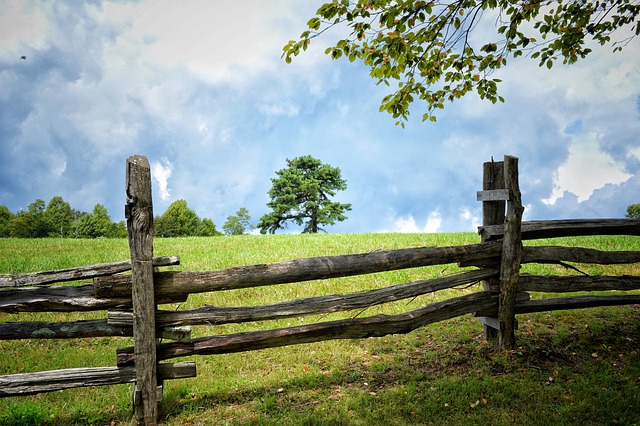In New Bedford, MA, the push for sustainable living has extended to outdoor spaces, prompting a shift towards eco-friendly fencing materials. This article explores the diverse options available in the region, highlighting the numerous benefits of choosing sustainable materials over traditional ones. From reduced environmental impact to enhanced aesthetics and improved property values, green fences are gaining popularity. We delve into common materials like recycled plastic, wood alternatives, and natural fibers, discussing their applications and offering installation and maintenance guidance for a thriving, eco-conscious yard.
- Exploring Eco-Friendly Fencing Options in New Bedford
- Benefits of Sustainable Fencing Materials
- Common Eco-Friendly Fencing Materials and Their Uses
- Installation and Maintenance Tips for Green Fences
Exploring Eco-Friendly Fencing Options in New Bedford
In New Bedford, MA, exploring eco-friendly fencing options has become increasingly popular as residents and businesses seek sustainable alternatives. The city’s commitment to environmental preservation and green initiatives naturally extends to landscaping choices, including fencing. With a diverse range of materials available, from recycled plastic to organic wood and bamboo, homeowners and contractors can make informed decisions that not only enhance the aesthetics of their properties but also contribute to a healthier planet.
These eco-friendly fencing materials offer significant benefits beyond their environmental advantages. They are durable, requiring less maintenance than traditional fences, and can be designed to suit various aesthetic preferences, from natural and rustic looks to modern and sleek styles. Moreover, many of these options provide excellent privacy and security while promoting biodiversity by creating habitats for local wildlife.
Benefits of Sustainable Fencing Materials
In New Bedford, MA, opting for eco-friendly fencing materials offers a multitude of benefits for both homeowners and the local environment. These sustainable options reduce carbon footprints by minimizing the transportation of traditional, often non-local, materials. Locally sourced, natural materials like wood from certified sustainable forests or recycled metal not only lower emissions but also support local economies. Moreover, these products are often more durable and low-maintenance, ensuring longer-lasting fences that require less repair and replacement over time.
Sustainable fencing also contributes to biodiversity by preserving natural habitats and reducing the use of chemicals. Many eco-friendly materials are rot-resistant or treated with natural preservatives, eliminating the need for toxic paints or coatings. This not only keeps local water sources cleaner but also creates a healthier environment for both people and pets that come into contact with the fence. Additionally, these materials can enhance the aesthetic appeal of properties, offering unique and diverse visual options that blend seamlessly with surrounding landscapes.
Common Eco-Friendly Fencing Materials and Their Uses
In New Bedford, eco-conscious homeowners and businesses have an array of sustainable fencing materials to choose from, each offering unique benefits for both aesthetics and environmental impact. Common options include recycled plastic, treated wood from responsibly managed forests, and bamboo—all of which serve diverse purposes. Recycled plastic, often molded into boards or panels, is durable and requires minimal maintenance, making it ideal for high-traffic areas or where reduced upkeep is desired. Treated wood, while not entirely eco-friendly due to the chemical treatments, can still be a responsible choice if sourced from certified sustainable forests, ensuring both longevity and visual appeal. Bamboo, known for its rapid growth and strength, offers an organic alternative that seamlessly blends into natural landscapes, making it popular for fences meant to enhance outdoor spaces.
Each material has its own unique advantages, catering to various preferences and environmental considerations. Homeowners in New Bedford can select based on factors like durability, aesthetics, budget, and their commitment to sustainability. These options not only reduce the carbon footprint of fencing but also contribute to a more harmonious relationship with the local ecosystem, reflecting a growing trend towards sustainable living.
Installation and Maintenance Tips for Green Fences
When installing an eco-friendly fence, it’s crucial to choose a suitable location with adequate space for planting and growth. Start by preparing the ground, ensuring it’s free from weeds and debris. Follow the manufacturer’s instructions for assembling the fence, using environmentally friendly tools and fasteners whenever possible. Planting native vegetation along the fence line not only enhances aesthetics but also supports local ecosystems. Regularly water and weed the plants to ensure they thrive.
Maintenance involves keeping an eye out for any signs of damage or wear and promptly repairing or replacing sections as needed. Remove dead foliage and trim excess growth to maintain the fence’s structure and appearance. Seasonal clean-ups, such as raking leaves and cutting back perennials, will keep your green fence looking its best. Remember, eco-friendly doesn’t mean maintenance-free; regular care is essential for the long-term sustainability and beauty of your New Bedford, MA, green fence.
